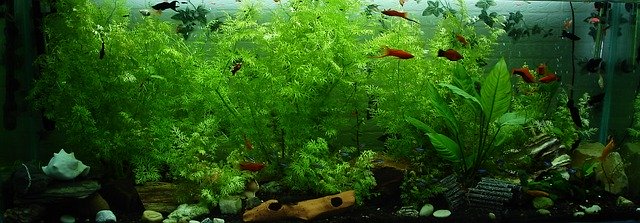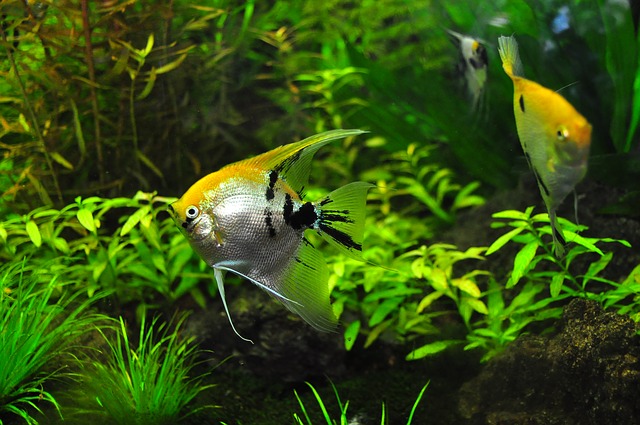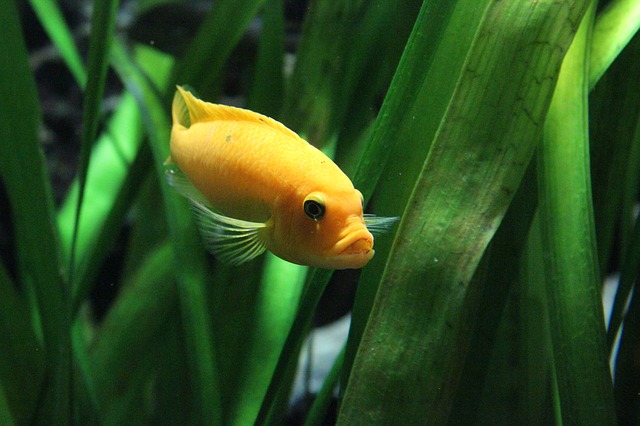
Water changes are considered an integral part of fish tank maintenance. However when it comes to doing them frequently, many owners frown because it takes time and effort. The truth is no special skills are required to do water changes for your fish tank and in return you get a healthy fish tank with happy fish.
Water changes are necessary to keep water chemistry intact and remove excess toxic gases that are still remaining in the water even after the tank has been cycled completely. These excess gases are normally “Nitrates” that remain in the end when the nitrogen cycle is about to finish.
When people say water changes, they do not completely change the entire water in the tank but just 20% to 25% of the total capacity. If you test the water using a water testing kit, normally you’ll find that the remaining of toxic gases (Nitrates) is still there that need to be removed.
Once the tank has been cycled, nitrates still remain in the water. Nitrates are not as harmful as ammonia and nitrites from which nitrates are formed but that does not mean that you can have them in the fish tank water. By changing 20% to 25% water you eliminate the chance of nitrate spike in your aquarium thus ensuring safety for fish.
Once this is clear that why water changes are necessary in a fish, the next question comes to mind..
Table of Contents
How often to change the water in your fish tank?
Many people instead of strictly following rules of this hobby, just change the water every week because it feels good. It gives them feeling that they are caring for their fish. This also has an added advantage that water chemistry remains intact.
But if you still want to follow rules then you’ll have to find out that by testing your water every week and check toxic levels and then decide your frequency. How often you must change water also depends on a lot of factors like.
1) How big is your tank (Capacity in gallons)
2) How many fish live in it?
3) How often you feed your fish?
4) Does you tank has filtration?
Once you are confident about toxic gas levels that are being maintained in your fish tank, you can postpone your cleaning schedule as per your convenience and understanding and still achieve great results.

Will my fish die if I don’t change water frequently?
Your fish will not die if you never change water but only if you have a system in place to remove toxic gases from the water. This could be in the form of live plants or a biological filter system in place that takes care of the remaining toxic gases that are left after the nitrogen cycle in complete.
One easy way to handle this is to prevent toxic gases from forming to dangerous levels. You can never completely eliminate formation of toxic gases because fish eat food and produce solid waste everyday. Also fish never eat 100% of the food you feed them and some remains uneaten that decays and forms toxic elements. There are some precautions that if you follow will prevent formation of harmful gases in your aquarium water and obviously the need to remove them will be eliminated.
Some of the things you can do are
1) Avoid overstocking your tank with too many fish.
2) Avoid overfeeding your fish
3) Keep steady water cleaning schedule.
4) If you have a sick fish, don’t treat him in the main tank. Transfer him to a quarantine tank and treat him there.
Why do some fish die after water changes?
Some fish keepers complain that a fish died after they do a partial water change. There are possibilities of this happening sometimes and there are a variety of reasons for this to happen.
Tropical fish are very sensitive to pH levels and temperature of water. When you change water both these values differ for some time. If the tank is big then the amount of water being replaced is also big. SO for that water to heat to the desired temperature takes time. Some fish can’t handle the sudden changes in pH and temperature of water after it has been changed and they face death.
Another problem with regular water changes is that it also removes beneficial bacteria from the tank. While cleaning the tank, many people suck out debris from the bottom of the substrate where beneficial bacteria reside. Some of these get sucked outside of the tank and their number reduces drastically in the tank. This can spike up ammonia and nitrite levels in the tank causing death. That is why start by changing only 10% to 15% of water weekly if you are new into this and see the effect on health of your fish.
The truth is the more water you change (up to 25%) the better it is to remove toxic gases from water but the downside is that the replaced water will not have the same chemical properties like pH and temperature of the existing water. Some fish may not take this easily and suffer. That is why go slow on water changing exercise and observe every possible effect on fish health.
Is a “No Water Change” tank really possible?
Many people have achieved a practical “no water change” aquarium possible in the real world. By now you must have a realized that during the nitrogen cycle ammonia gets converted into nitrites and these get converted into nitrates. Water changes are necessary to get rid of these remaining nitrates that if not tackled can harm your fish seriously.
Nitrates are not as harmful as ammonia and nitrites but above a certain limit can kill fish that is why by removing 20% to 25% water once a week the nitrate levels are maintained within limits and fish are happy.
But there are some methods by which the nitrates can be converted into nitrogen gas which escapes into surrounding by itself and is practically harmless to fish. If you can achieve this without water changes then the very need to do water changes gets eliminated. Many people have achieved this and developed a “No water change” tank with amazing results.
The process of converting nitrates into nitrogen gas is called as “De-nitrification”. During the process of de-nitrification complex chemical reactions take place that are outside scope of this article.
Normally in layman’s terms this is done by supplying lots of dissolved oxygen in the aquarium water that speed up the de-nitrification process. Oxygen helps convert nitrates into pure nitrogen that escapes naturally into surroundings leaving behind clean and healthy water behind thus by completely eliminating the need to change the water every week.
But in an aquarium instead of supplying extra oxygen, another way is to let bacteria consume harmful nitrates and get the same results. Oxygen acts like an oxidizing agent in converting nitrates to nitrogen gas. But if the bacteria are deprived of this oxygen they will consume the harmful nitrates instead of oxygen and do the job for you. Your job is to produce a condition called “Anoxic” in your filter where there is less oxygen and bacteria are forced to consume nitrates for the de-nitrification process.
This is achieved by setting up a large volume filter with small flow of water going in. By reducing flow of water the oxygen that goes in consumed quickly by bacteria and at the end of the flow of the filter bacteria are forced to consume nitrates so that water that comes out of the filter has practically zero nitrates remaining in the water, thus completely eliminating the need to do water changes.

Will live plants help in achieving a no water change tank?
Yes, live plants help in achieving a no water change tank but only if the tank is not overcrowded with plants. Plants consume most of the toxic dissolved gases in aquarium water and make it healthy but only when there are conditions that allow plants to grow mutually. If you stuff the tank with too many plants then there won’t be any space left in the tank for plant growth.
This can cause death of plant and filtration stops because when plats die they release ammonia back in the tank water which is toxic to fish. So in short to achieve a no water change tank, all you have to do is have a planted tank where there is room for growth. If you see tank is getting crowded with plants, instead of changing water, remove some plants so that other plants get some space to grow. Plants consume light energy to convert harmful gases into nitrogen. Plant growth in a tank is a sign that good amount of filtration is going on in the tank.
If you don’t want to remove plants from your tank, one easy trick is to put plant eating fish in your tank that will take care of plant growth. Goldfish are known to be plant eaters just like turtles. If you love goldfish then you may consider adding them to tank to cater this issue.